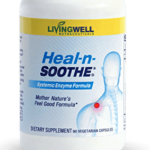Utilizing Stability Exercises for Your Core to Alleviate Back Pain and Discomfort
Studies indicate a strong core and abdominal muscles are important to preventing lower back pain or healing and retaining a healthy back.
Today, we will talk about a few core stability exercises and abdominal muscles. Incorporating core stability exercises into your normal workout routine can be a fast and easy way to address muscle imbalances, mitigate lower back pain and discomfort, and prevent future incidents of back pain by strengthening your core and whole body together.
What is the core? Essentially, everything from your hips and waist to your neck is considered to be your core. Certainly, this encompasses your abdominal muscles, middle and lower back as well as several distinct muscle groups in the equation. Normally, this region of your body is also known as torso (or the “trunk” of your body). Keep in mind that the core is also what stabilizes the spinal column and so having a safe set of core stability exercises for your workout routine is clearly absolutely crucial for this reason.
Luckily, in some occurrences, chronic back pain has been successfully treated by strengthening and stabilizing core and abdominal muscles alone. Undoubtedly, no one is saying that all chronic or lower back pain can be battled with this system, despite all that in some cases, it has assisted in various incidents. If you unaware, you should always visit your family health care professional for recommendations before beginning any workout session.
The majority of adults I have come into contact with have determined that strong abdominal muscles alone will provide them with a strong core. Regrettably, strong abdominal muscles by themselves are usually not ample.
Now let’s talk about those stability exercises for your core. Essentially, these core stability exercises will target all the necessary muscle groups and will provide you with strong core muscles and abdominal muscles. Not only that, the core encompasses multiple distinct muscle groups in the body and these exercises will specifically address those that aid to stabilize the core torso.
One exercise is known as V-Up. To start, first lie down on your back with legs and arms extended while maintaining them straight. After that tighten your abdominal muscles and elevate your hands and feet toward one another, and then rest for a minute. You should do 3 sets of 10 reps each. You may add additional sets or reps as you progress.
Another exercise is known as the Medicine Ball Bridge you will need a medicine ball. Before I forget, if you do not own a medicine ball that’s okay. For all practical purposes you can go to your gym if you have a gym membership and they should have them. Clearly, if you would like one for yourself personally to use at home then they are available at almost all sporting goods store or major shopping store like Target, Walmart, etc and are not expensive at all. Moreover, this exercise can be accomplished without one as well. To start you will need to get down into a modified push up position. However rather than your hands being on the flat on the floor like a regular push up utilize your forearms. Next have your toes balanced on the medicine ball. Squeeze your abdominal muscles in tight for 30 seconds to a minute and rest for a minute then do another. You should do this at least 3 to 5 times; as far as time and number of sets you can work you way up to greater numbers. For now this will be plenty.
The last exercise is called the Knee to Elbow Bridge and it is also a truly straightforward to do. Essentially, this exercise also begins back down in a push up position. For the next step lift your right hand and left foot off the floor. Finally you pull your right elbow back and left knee forward until they touch each other. Do 3 sets of 10 reps. As I said earlier you can add more sets or reps as you progress.
By doing this core and abdominal muscle workout routine on a regular basis you will strengthen your core, abdominal muscles, and all the other muscle groups needed for impeding lower back pain or healing and sustaining a healthy back.


